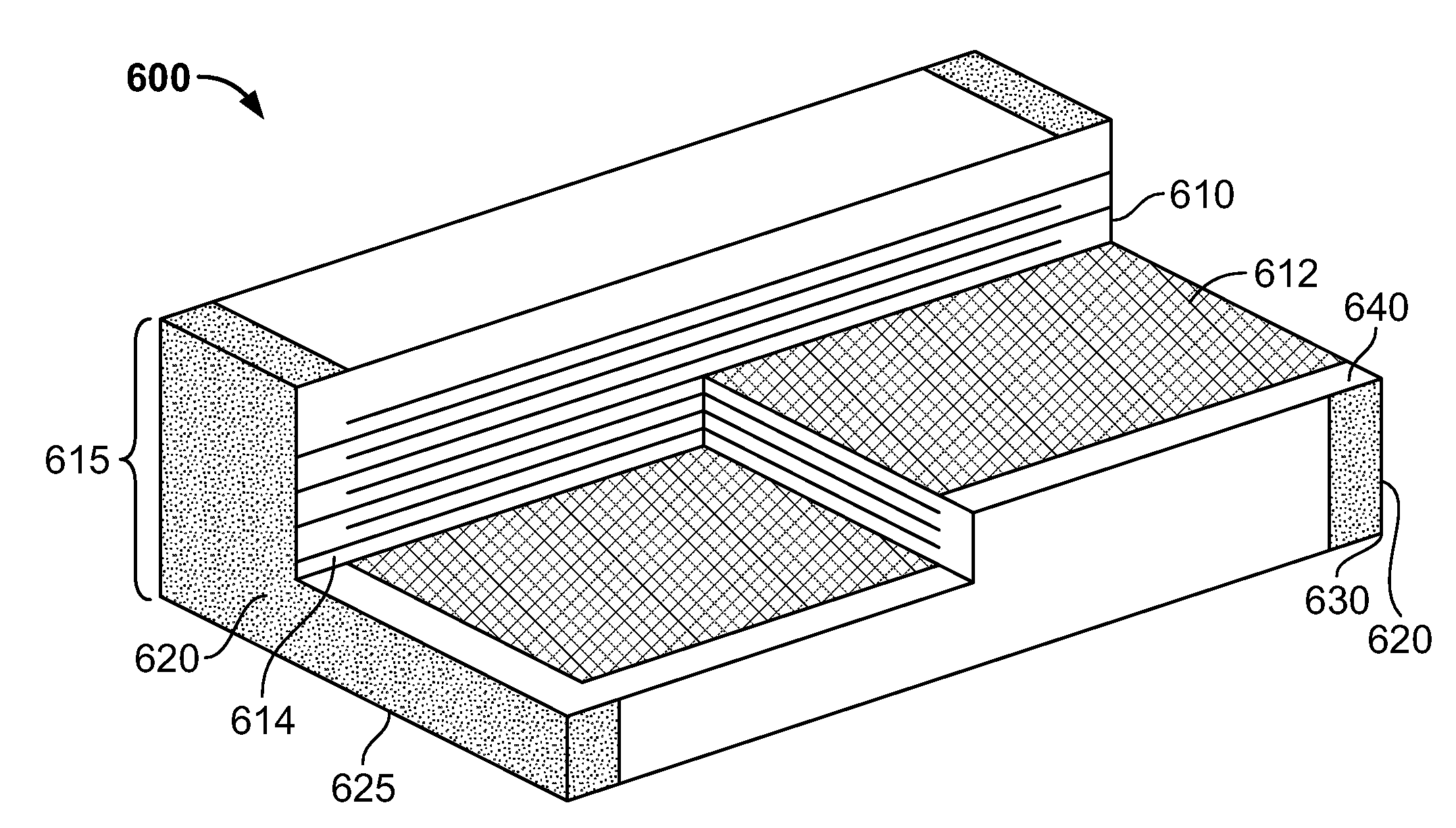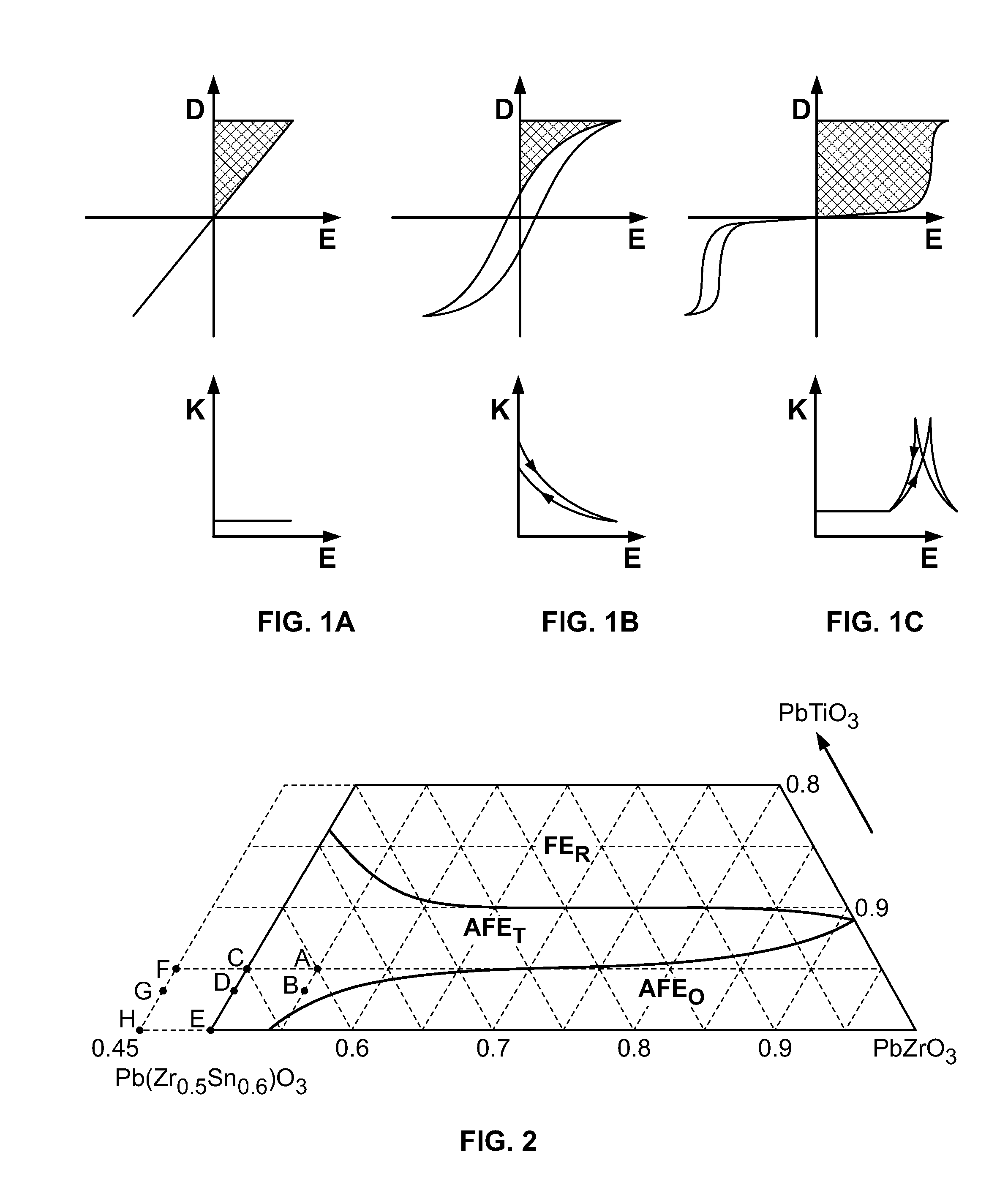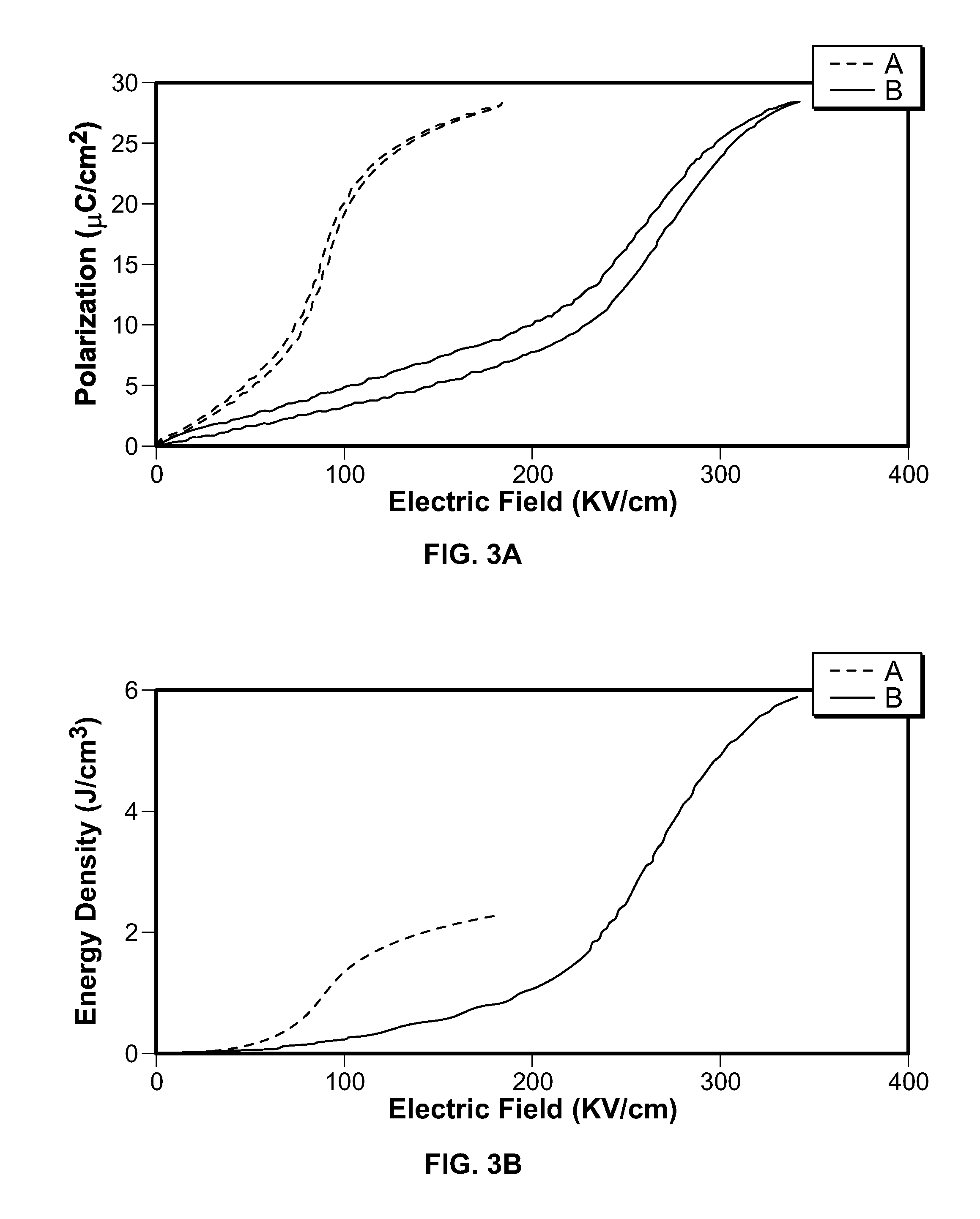Antiferroelectric multilayer ceramic capacitor
a ceramic capacitor and antiferroelectric technology, applied in the field of ceramic capacitors, can solve the problems of high energy density, high voltage, and large capacity of energy storage capacitors, and achieve the effect of high energy density and antiferroelectric materials
- Summary
- Abstract
- Description
- Claims
- Application Information
AI Technical Summary
Benefits of technology
Problems solved by technology
Method used
Image
Examples
Embodiment Construction
[0057]The present invention now will be described more fully hereinafter with reference to the accompanying drawing, in which a preferred embodiment of the invention is shown. This invention may, however, be embodied in many different forms and should not be construed as limited to the embodiments set forth herein; rather, these embodiments are provided so that this disclosure will be thorough and complete and will fully convey the scope of the invention to those skilled in the art.
[0058]The invention makes use of a class of materials known as antiferroelectrics which are ceramics that exhibit high breakdown strengths and dielectric permittivities that increase with electric field. This is in contrast to polymers, electrolytics, mica, supercapacitors, glass, and many types of ceramic capacitors all of which make use of linear dielectrics. These have dielectric permittivities that do not change value with applied field. An exception is ceramic capacitors with high dielectric constant...
PUM
| Property | Measurement | Unit |
|---|---|---|
| Temperature | aaaaa | aaaaa |
| Temperature | aaaaa | aaaaa |
| Length | aaaaa | aaaaa |
Abstract
Description
Claims
Application Information
 Login to View More
Login to View More - R&D
- Intellectual Property
- Life Sciences
- Materials
- Tech Scout
- Unparalleled Data Quality
- Higher Quality Content
- 60% Fewer Hallucinations
Browse by: Latest US Patents, China's latest patents, Technical Efficacy Thesaurus, Application Domain, Technology Topic, Popular Technical Reports.
© 2025 PatSnap. All rights reserved.Legal|Privacy policy|Modern Slavery Act Transparency Statement|Sitemap|About US| Contact US: help@patsnap.com



